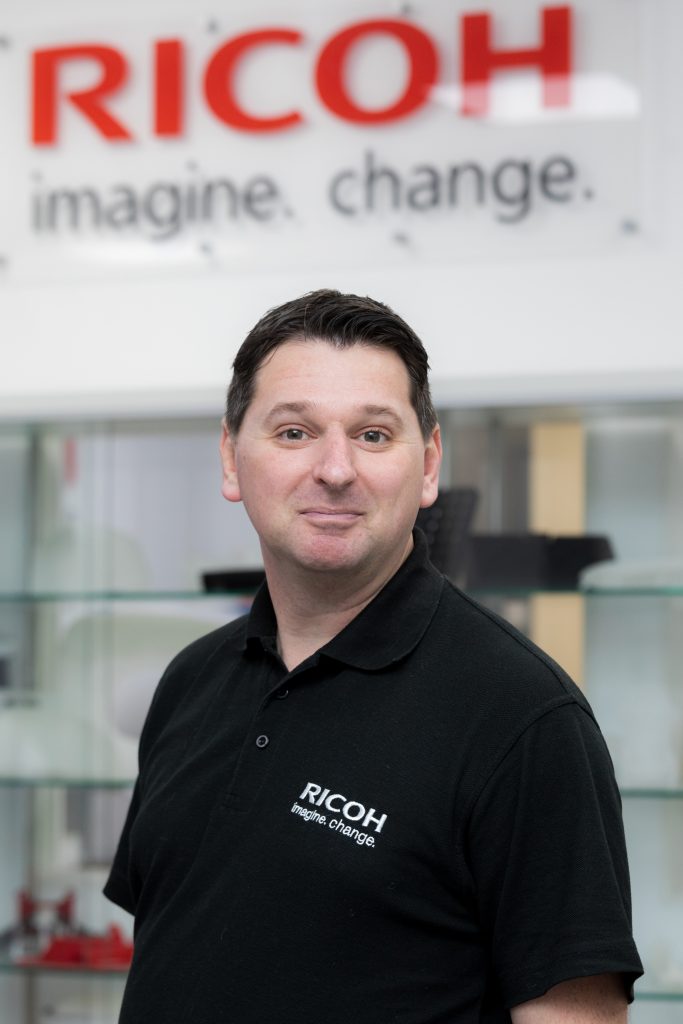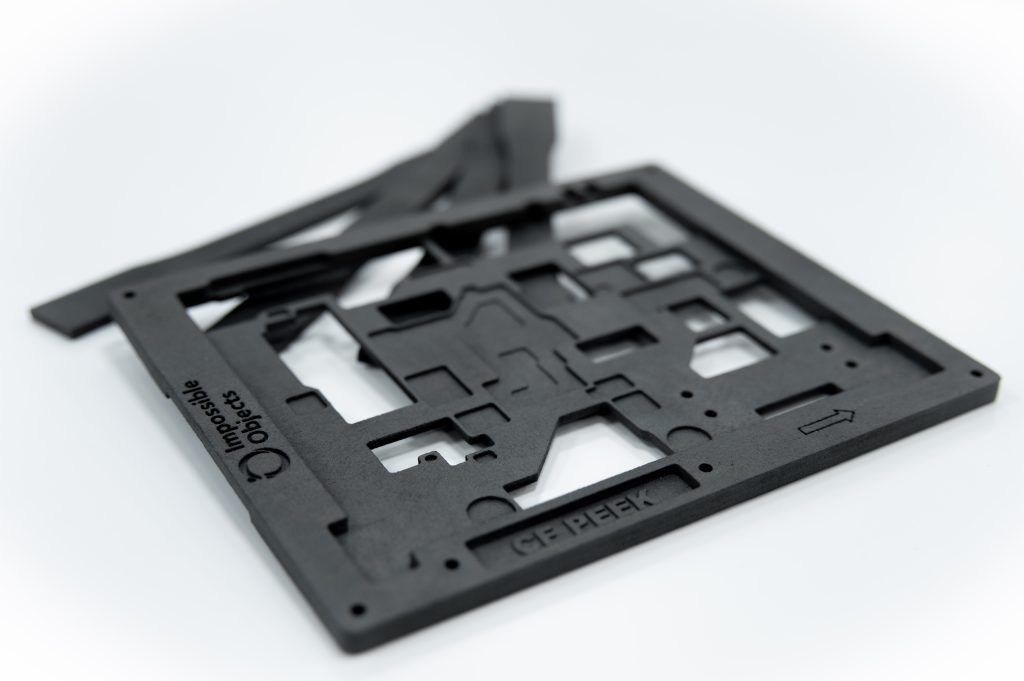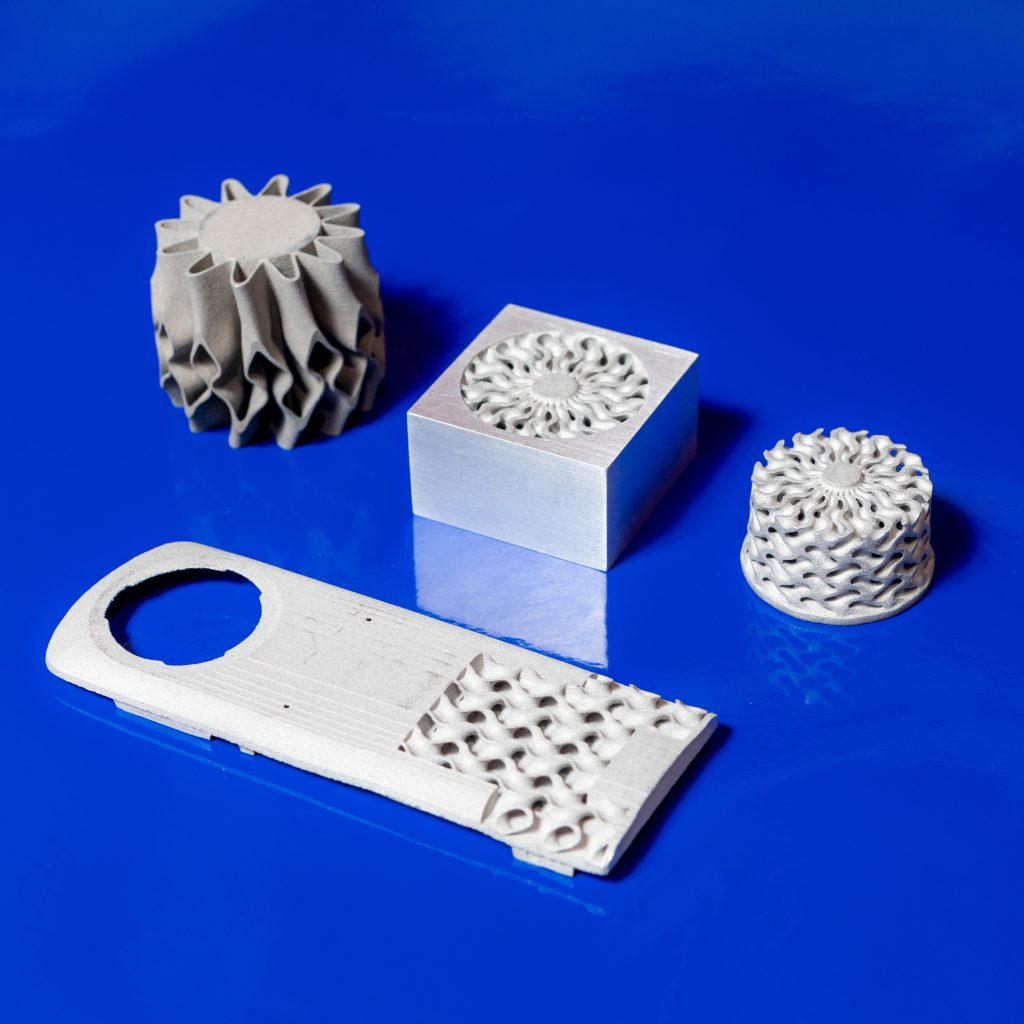In a recent interview at TCT 3Sixty with Enrico Gallino, Senior Engineer at Ricoh 3D, we delved into how Ricoh is approaching 3D printing, exploring the company’s focus on material development, composite integration, and sustainability. With a background in material science and a fresh perspective, Gallino has been instrumental in driving Ricoh 3D’s advancements in the additive manufacturing industry.
I also had the opportunity to ask about Ricoh’s forthcoming metal 3D printing system. A technology that some in the industry believe has the greatest potential for growth – metal binder jetting.
Before Ricoh, he worked in the field of material science, providing him with a solid foundation for his role. As soon as he joined Ricoh, his mission was clear: to introduce new materials for the SLS 3D printing system and push the boundaries of what was possible in 3D printing.
Over the years, Gallino’s role expanded beyond material development, as he became more involved with customer support and collaboration with the broader ecosystem. The gradual shift allowed him to better understand customer needs and provide technical support to the sales team. With the evolution of Ricoh 3D’s printer offerings, Gallino’s focus shifted to working closely with customers, dedicating a significant portion of his time to customer support and application development.
Read more 3D printing news from TCT 3Sixty 2023 here.

Senior Engineer sheds light on Ricoh 3D’s innovative approach to additive manufacturing and its commitment to sustainability
Ricoh 3D’s main offering centers around printing large parts using polypropylene. This material has become their unique selling proposition due to its widespread use and market demand, with polypropylene still accounting for 90% of the market. In addition to polypropylene, Ricoh 3D also offers PA12 (multijet fusion technology) and a range of FDM materials. However, what truly sets them apart is their commitment to sustainability and reducing environmental impact. By leveraging polypropylene’s properties, Ricoh 3D aims to enable lightweighting and improve product efficiency, ultimately reducing CO2 emissions and positively impacting the planet.
The company has also ventured into the exciting realm of composite additive manufacturing by collaborating with Impossible Objects. By harnessing the power of composite materials, Ricoh 3D envisions creating products that are lighter, more efficient, and environmentally sustainable.
While Ricoh 3D operates within a larger multinational organization, they have cultivated a startup-like atmosphere, fostering a dynamic and customer-centric approach. This agility allows them to listen closely to market demands, gather valuable insights, and swiftly adapt their strategies accordingly.
Looking ahead, Ricoh 3D is actively exploring opportunities for future composite development, both in collaboration with Impossible Objects and through Ricoh’s own R&D activities. As the 3D printing industry evolves, Ricoh 3D aims to identify growing applications and volume opportunities that will prompt them to invest more substantially. With sustainability at the core of its mission, Ricoh 3D envisions a future where additive manufacturing plays a crucial role in lightweighting products and reducing CO2 emissions.

Development of metal binder jetting technology and the quest for killer applications in additive manufacturing
The interview also explored the exciting realm of metal binder jetting, market potential, and the pursuit of groundbreaking applications in additive manufacturing. Gallino provided an update on the project that was first announced in November 2021 and Ricoh 3D’s ongoing efforts to perfect the technology and identify key market opportunities.
Gallino clarified that Ricoh’s metal additive technology is still under development and with a focus on aluminum alloy. Working closely with customers, they are co-creating applications that leverage the unique capabilities of metal binder jetting. While Gallino refrained from disclosing specific customer names, he hinted at the potential for a range of applications highlighting the technology’s versatility.
Ricoh 3D’s foray into metal binder jetting is rooted in its core technologies and manufacturing expertise. Leveraging its experience in producing toners and powders, the company aims to perfect the binder formulation required for metal binder jetting. Gallino emphasized that Ricoh 3D is strategically positioning itself as a key player in manufacturing, diversifying beyond traditional printers and photocopiers with 3D printers and their components. According to him, the potential of binder jetting as a technology is immense once it reaches its full potential.
Regarding speed and scalability, Gallino highlighted the advantages of binder jetting. While the process requires qualification and testing to ensure its reliability. Once perfected, binder jetting can offer phenomenal capabilities and open doors to diverse applications. Gallino acknowledged that the industry is still evolving, and identifying the killer applications that will drive widespread adoption is a challenge but one that Ricoh 3D aims to tackle through visibility and promotion of the technology.
Gallino also emphasized the importance of staying agile and adaptable as the market evolves. He highlighted the significance of partnerships and collaborations with end-users to unlock the full potential of metal binder jetting. Gallino projected that metal binder jetting could potentially lead to 100,000-part production runs. Although hesitant to estimate million-part production runs, he remained optimistic about the technology’s capabilities in high-volume applications.
In closing, Gallino affirmed Ricoh 3D’s commitment to long-term partnerships and continuous development. He emphasized that the journey toward perfecting metal binder jetting and identifying growth applications is an ongoing learning process. Ricoh 3D’s dedication to collaboration and its customer-centric approach aim to position them at the forefront of additive manufacturing advancements, ensuring exciting developments lie ahead for the company.

What does the future of 3D printing for the next ten years hold?
What engineering challenges will need to be tackled in the additive manufacturing sector in the coming decade?
To stay up to date with the latest 3D printing news, don’t forget to subscribe to the 3D Printing Industry newsletter or follow us on Twitter, or like our page on Facebook.
While you’re here, why not subscribe to our Youtube channel? Featuring discussion, debriefs, video shorts, and webinar replays.
Are you looking for a job in the additive manufacturing industry? Visit 3D Printing Jobs for a selection of roles in the industry.
Featured image shows Ricoh metal binder jetting at Ricoh VIP visit event at the HQ in Telford November 2022. Picture by Shaun Fellows / Shine Pix Ltd.


